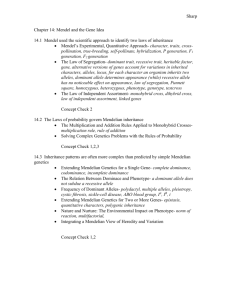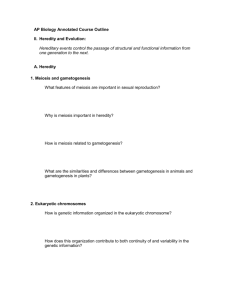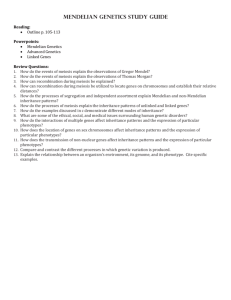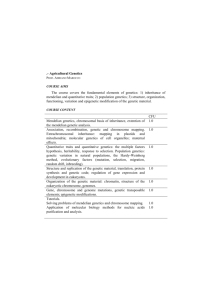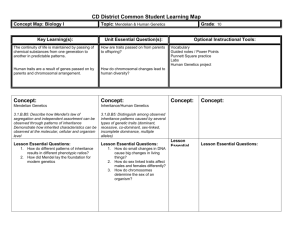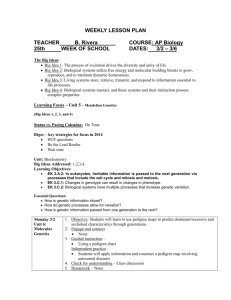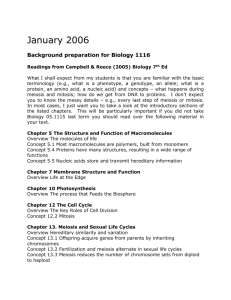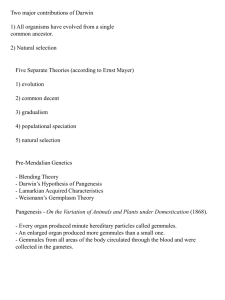DOC - San Juan College
advertisement
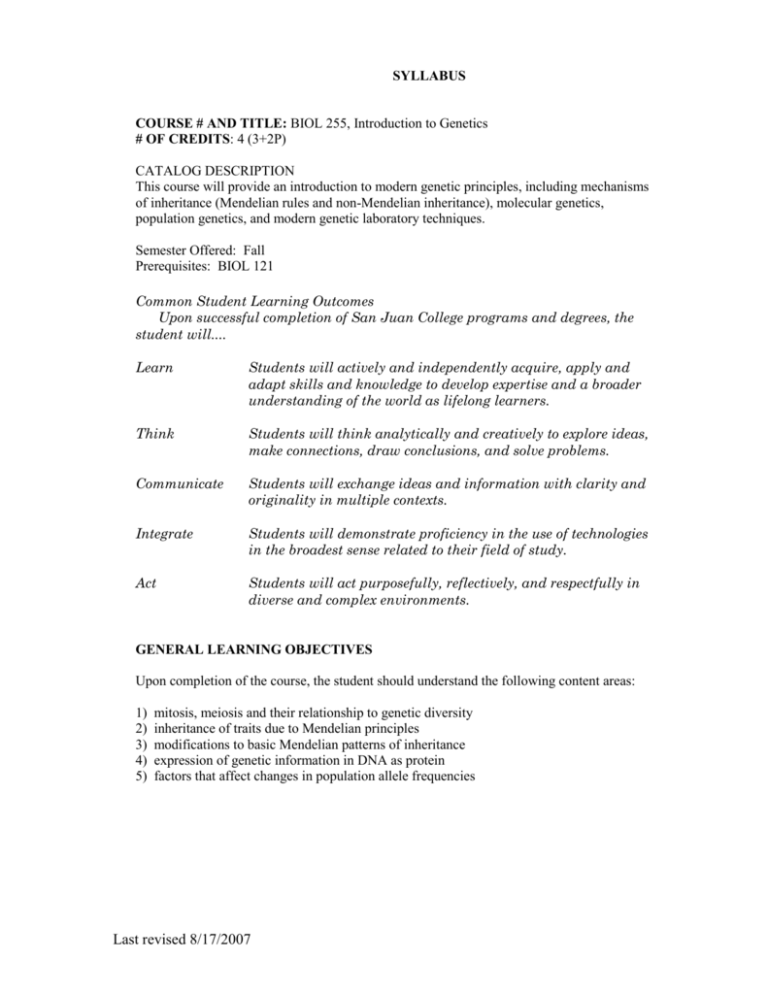
SYLLABUS COURSE # AND TITLE: BIOL 255, Introduction to Genetics # OF CREDITS: 4 (3+2P) CATALOG DESCRIPTION This course will provide an introduction to modern genetic principles, including mechanisms of inheritance (Mendelian rules and non-Mendelian inheritance), molecular genetics, population genetics, and modern genetic laboratory techniques. Semester Offered: Fall Prerequisites: BIOL 121 Common Student Learning Outcomes Upon successful completion of San Juan College programs and degrees, the student will.... Learn Students will actively and independently acquire, apply and adapt skills and knowledge to develop expertise and a broader understanding of the world as lifelong learners. Think Students will think analytically and creatively to explore ideas, make connections, draw conclusions, and solve problems. Communicate Students will exchange ideas and information with clarity and originality in multiple contexts. Integrate Students will demonstrate proficiency in the use of technologies in the broadest sense related to their field of study. Act Students will act purposefully, reflectively, and respectfully in diverse and complex environments. GENERAL LEARNING OBJECTIVES Upon completion of the course, the student should understand the following content areas: 1) 2) 3) 4) 5) mitosis, meiosis and their relationship to genetic diversity inheritance of traits due to Mendelian principles modifications to basic Mendelian patterns of inheritance expression of genetic information in DNA as protein factors that affect changes in population allele frequencies Last revised 8/17/2007 SPECIFIC LEARNING OUTCOMES Upon successful completion of the course, the student will be able to: 1. 2. 3. 4. 5. 6. 7. 8. 9. 10. 11. 12. 13. 14. 15. 16. 17. 18. 19. 20. 21. 22. 23. 24. 25. explain the history of genetics and important contributions to modern genetics; compare and contrast eukaryotic mitosis and meiosis; understand how meiosis leads to genetic diversity; predict the results of monohybrid and dihybrid crosses according to Mendelian principles; understand the relationship between random segregation, independent assortment, and meiosis; test predictions of Mendelian crosses using the Chi-square Test; list sex determination mechanisms in organisms such as mammals, birds, and insects; describe how sex chromosome linked genes affect expected Mendelian ratios; explain variations in expected Mendelian ratios due to penetrance and expressivity, multiple alleles, interaction between genes, and interaction with the environment; analyze human pedigrees for patterns of inheritance; understand the concept of gene linkage; calculate recombination frequencies between two genes and use this to construct gene maps; describe chromosomal structure; list chromosomal abnormalities and their effects on development; compare and contrast prokaryotic and eukaryotic DNA replication; compare and contrast prokaryotic and eukaryotic transcription; list and explain mechanisms of eukaryotic mRNA processing; describe how the information in DNA is transcribed and translated into a protein compare and contrast prokaryotic and eukaryotic regulation of gene expression; explain the role of DNA repair mechanisms in genetics; describe modern molecular genetic techniques such as restriction analysis, PCR, gene cloning, and blotting; understand issues in modern genomics; list the assumptions behind Hardy-Weinberg Equilibrium; describe how changes in allele frequencies affect Hardy-Weinberg Equilibrium; use the algebraic model for Hardy-Weinberg Equilibrium to make predictions about future population allele frequencies Syllabus developed by ____________________ Date: _____________________ Syllabus reviewed by _____________________ Date: _____________________ A current syllabus must be on file in the dean’s office for every course being taught during a given semester. Last revised 8/17/2007

